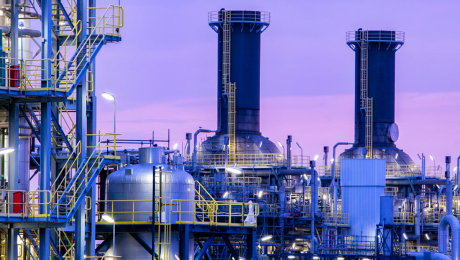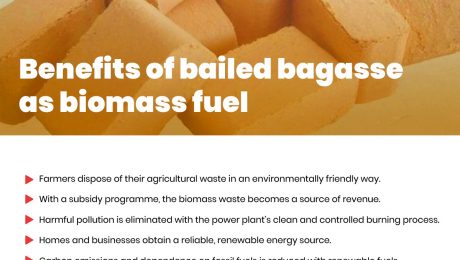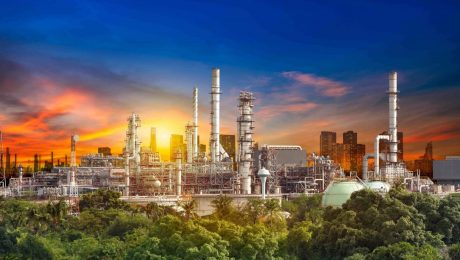- Home
- About Us
- Products
- EPC projects
- Technology
- Services
- Clients
- Media
- Blog
VIEW ALL -
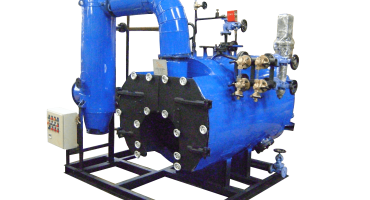 19 July 2023 by bullweb, in Boiler
19 July 2023 by bullweb, in BoilerA Guide to Boiler Maintenance in Chemical Processing Plant
Steam boiler systems are irreplaceable in the chemical process industries. Among...READ MORE +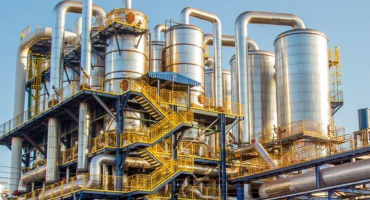 19 October 2022 by bullweb, in Steam Boiler,Steam Jackets
19 October 2022 by bullweb, in Steam Boiler,Steam JacketsSteam Jackets in Boilers | Definition, Types, and Applications
Steam is integral to meet various process operational requirements in manufactur...READ MORE +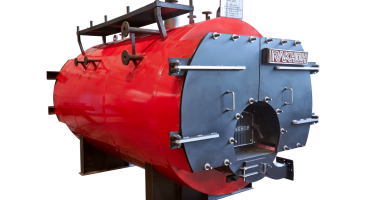 17 October 2022 by bullweb, in Boiler,Steam Boiler
17 October 2022 by bullweb, in Boiler,Steam BoilerSigns that indicate replacement for steam boilers
Steam boilers are vital equipment for steam generation in the process and manufa...READ MORE +
- Careers
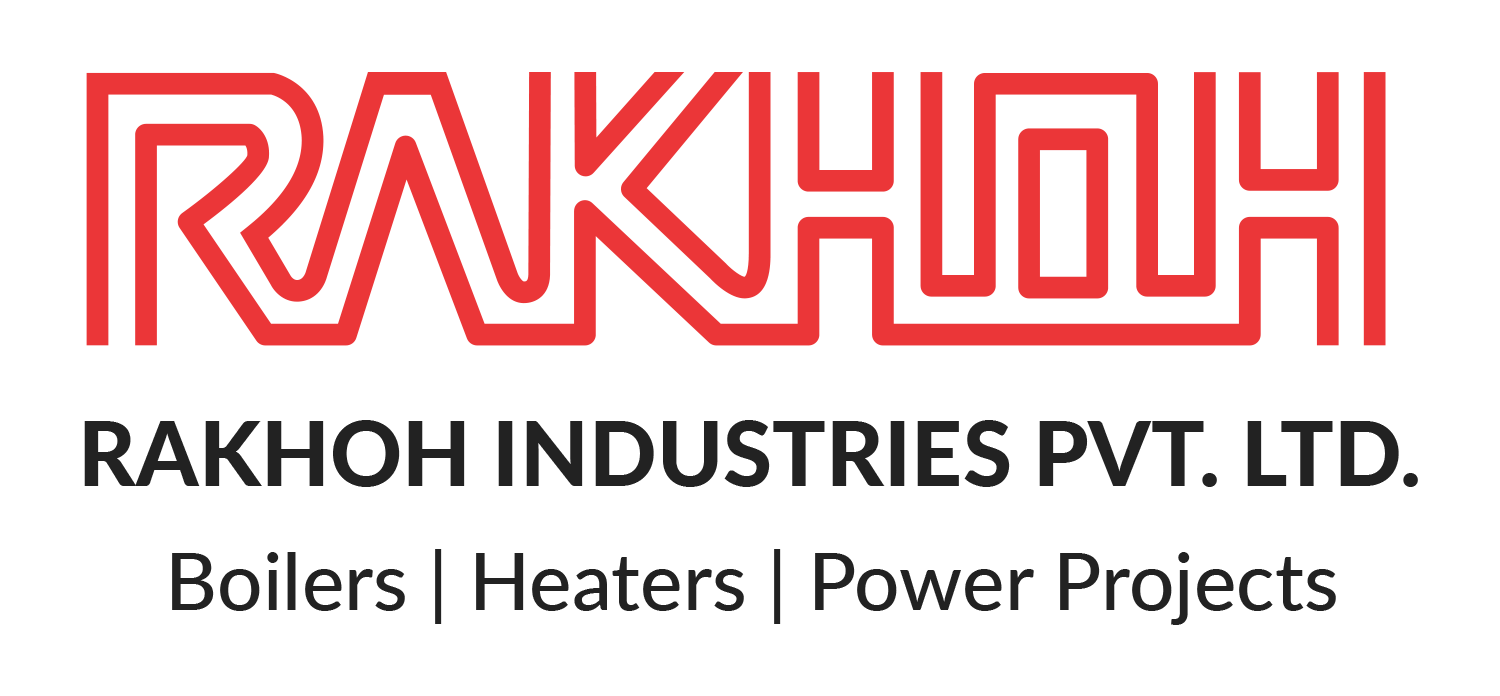
BOILER ACCESSORIES, THERMIC FLUID HEATERS & SPECIALTY FABRICATION.
+9120 - 66308333
Email: enquiry@rakhoh.com
RAKHOH BOILERS
S-11, T Block, M.I.D.C.,Bhosari, PUNE - 411 026. Maharashtra, India
BLOG & STORIES
Biomass is one of the fastest-growing sources of fuel in the world. Biomass fuel or biofuel is derived from organic matter like plants or animals. One of the most important factors of biomass fuel is that it is carbon neutral as the carbon dioxide is extracted from the organism during its life cycle. It results in preventing the additional release of carbon dioxide during combustion. For instance, trees require carbon dioxide for photosynthesis, leading to the absorption of carbon dioxide from the atmosphere. While burning wood, the carbon dioxide is released back into the environment while the oxygen is extracted for the burning process. Therefore, biomass fuel does not cause any environmental loss and is an ideal renewable energy source. Similar to biomass, biogas is a renewable source of energy.
There are various ways to obtain biomass fuel of natural energy. It is noteworthy that the industries using wood as fuel do not usually cut the entire tree but use waste products such as rotten wood, branches, or leaves. These waste products are crushed and transported to biomass power plants. Biomass is also produced by growing it specifically for fuel purposes.
How is energy produced using biomass?
The biomass fuel is burned to convert water to steam, used further for heating in process plants or to produce electricity. Biomass is either burned directly or can be converted to biogas or biofuel like ethanol and biodiesel that are burned for energy. Biodiesel is usually used in vehicles and is derived from vegetable oil and animal fats.
Biomass pellets are a popular biofuel produced by compressed organic matter. Due to its smaller size, it is easy to transport and can be fed automatically to the burner. The high density and low moisture content in the biomass pellet result in effective and complete combustion.
On the other hand, biogas is produced from the same organic matter as biomass. However, unlike biomass, biogas results from fermentation, produced during a multi-stage process of anaerobic micro-bacterial degradation of organic substances, also known as anaerobic digestion. The process takes place in special containers called digesters that lack oxygen, thereby producing gas as a result.
The gasses produced are CO2 (35%) and a significant amount of harmful greenhouse gasses like Methane (65%). However, it is not passed into the atmosphere as it is burned in a digester to produce energy. After the required processing, biogas is an ideal alternative for natural gas. The digested material is used later for compost.
Facts on Biomass Fuel:
Biomass is a vital fuel to replace with coal, as well as to promote the local economy. Here are some of the facts on renewable and sustainable biomass fuel.
- Biomass fuel used for power and heat generation replaces coal, natural gas, and other fossil fuels, maintaining carbon neutrality. Due to this, the high demand for wood results in the growth of more trees, absorbing even more carbon.
- Forests provide carbon storage for the long-term with various valuable products, and fuel for heat and power generation that reduces the spread of wildfires.
- Wood-based biomass decreases wildfire risk by using fallen or dead trees that may cause wildfires.
- Wood biomass converted to pellets by drying low-value wood is ideal in replacing high-polluting coal at existing energy and heat facilities.
- Strong demand for forest products such as the additional value of selling low-value wood for biomass is an important reason to grow forests. Higher demand for forest products entices in maintaining and investing in forest productivity to increase supply, resulting in more growth of forests.
- Since biomass is locally produced, harvested, and processed, it provides an economic boost in rural areas.
- About 32% of the total primary energy use in India is derived from biomass with more than 70% of the population depending on it for its energy needs.
- Primary biomass materials used for power generation include bagasse, rice husk, straw, cotton stalk, coconut shells, soya husk, de-oiled cakes, coffee waste, jute wastes, groundnut shells, sawdust, etc.
- Around 450-500 liters of biogas are produced from 1 kilogram of organic material. The residue after decomposition is a good fertilizer or manure.
- India has targeted 175 GW of alternative energy by 2022
Biomass in India:
India has ample biomass reserves, estimated to be around 500 million metric tons per year, with over 120 to 150 million metric tons used for energy production. The government of India plans to generate 50000 MW of electricity from biomass. Advancement in biomass energy production in India will help both rural and urban areas with social and economic benefits. Biomass is also a cost-effective and ecologically friendly energy source, ensuring more conventional techniques of production as well as an efficient and sustainable method of manufacturing. The demand for biomass energy is expected to increase by 2025. Due to population growth, increased industrial use, and technological advancements improving biomass fuel or the conversion of biomass fuel into effective energy carriers, it is predicted that the demand for biomass energy would significantly increase by 2025.
Rakhoh’s Biomass Boilers:
Rakhoh Boilers has been a leading boiler manufacturer since its inception in 1983. We manufacture efficient and reliable industrial boilers that ensure effective combustion with biomass fuel. Our biomass-fired boilers include Solid-fuel Bi-Drum, Combo X, Membrane X, Optipac, and Huskon.
For more details on our products and services, visit www.rakhoh.com
Steam boilers are a vital asset of the process and manufacturing industries globally. Plant managers take every measure to ensure that the boilers are well-functioned and deliver optimal results by following standard guidelines, regular maintenance, and steps to increase the efficiency of the steam boiler. One of the ways to ensure the optimum output of the steam boilers is proper insulation. Insulation is necessary for the safety of the process plant and energy efficiency. Poor boiler insulation is worse than a boiler without insulation. Therefore, it is paramount to assure proper insulation in steam boilers for effective results.
What is Insulation in Steam Boilers?
In simple terms, insulation helps a steam boiler in storing its thermal energy. Similar to the way a woolen garment retains heat in the body during the winter season. Boiler insulation is used to keep steam boilers and their pressure vessel units hot, prevent radiant heat loss and provide safety and protection to the processing unit and operating team. Proper insulation prevents the surface temperature of steam boiler doors and covers to exceed the required degrees of Fahrenheit. It results in causing danger to the operating personnel working in the vicinity of the boiler surface. It is advisable to insulate any surface that exceeds the temperature by 120°F. Boiler insulation includes insulating,
- Steam Boiler Doors
- Steam Drums Covers
- Steam Boiler Piping
Boiler piping insulation is important for its operation. However, it is often overlooked and may lead to significant heat loss. Proper insulation in team boilers results in energy conservation, plant and employee safety, and acceleration in efficiency for process operations.
Importance of Insulation in Steam Boilers:
Combustion in the furnace and the flue gases in the boiler shell tube heat the surface area that leads to steam generation or heating of water. Partial of the energy gets conducted away to the boiler shell surface.
As the steam boiler shell begins heating, it passes the heat to the surroundings to produce steam or heating water. Poor insulation causes loss of heat, resultantly reducing the efficiency of the steam boiler. Such situations are severe in rainy and winter seasons when the heat requirements increase significantly.
Therefore, both the water tube boiler and fire tube boiler must be properly insulated to prevent major heat losses. It has been found that in steam boilers, a loss of 20 to 22 degrees Celsius leads to a reduction of 1% of boiler efficiency.
Advantages of Boiler Insulation:
Considerable heat loss can lead to several issues, such as high expenses and a dangerous work environment. Proper boiler insulation prevents such significant loss and provides extensive benefits like,
Increased Efficiency:
As the steam boiler loses a significant amount of heat, it is required to operate intensively to attain the desired heat level to generate steam or hot water. Proper boiler insulation ensures that the heat is retained for easy and rapid heating of the boiler system. It leads to saving both time and money.
Saves Energy:
Proper boiler insulation can raise the temperature by 2° F to 4° F compared to steam boilers without or with poor insulation. Consequently, it can save up to 3% to 4% energy annually.
Safety and Reliability:
Proper boiler insulation ensures the safety of the process plant and the operating personnel. If boiler pipes are not insulated properly, it becomes excessively hot. Personnel operating near the vicinity of such structures are prone to get injured or burned due to excessively heated surfaces. It may also cause damage to the property of the processing unit.
Saves Expenditure:
Significant loss of heat leads to high expenditure. If steam boilers are left with poor insulation as they pass heated fluid, it requires additional energy to perform at an optimal level. Boiler insulation prevents thermal loss and thereby reducing loss of energy and expense.
Types of Boiler Insulation:
It is prudent to consider the type of insulation best suited for a steam boiler. There are two types of boiler insulation primarily preferred,
Removable Insulation:
As the name suggests, removable insulation can be removed easily and is ideal for steam boiler systems that frequent inspection and maintenance. It is easy to install and remove to access the component. It significantly reduces energy and heat loss without requiring any permanent fixture. The harness of the removable insulation is made from numerous materials including, snaps, straps, Velcro, and springs.
Permanent Insulation:
Permanent insulation is commonly found in boiler systems that do not require regular access to its components. Permanent insulation is sturdy and long-lasting that permanently encloses the surface that needs to be insulated. It is ideal for plants requiring long-term insulation without frequent inspection and maintenance.
Factors to Consider in Choosing Boiler Insulation:
Various factors should be considered while choosing boiler insulation, such as,
- The maximum temperature reached by the insulated component
- Potential exposure to the components
- Ambient temperatures
- Heat Retention Capacity
- Frequency of Insulation Removal
- Safety Requirements
- Space Availability
Since its inception in 1983, Rakhoh Boilers have strived to deliver efficient industrial steam boilers and thermal solutions to the clients. We are reputed to be a trusted name as a boiler manufacturer in over 26 countries worldwide. Over our journey of more than 38 years, we have provided efficient industrial boilers, waste heat recovery systems, boiler accessories, and boiler services to over 20 process industries.
Learn more about our products and services at www.rakhoh.com
Sugar is a staple in every household globally. Sugar cane is a large grass with a bamboo-like stalk sizing around 8 to 15 feet tall. The stalk contains sucrose for processing it to sugar while the other parts like leaves, top growth, and roots are considered waste. Earlier, the canes were burned in the field to eliminate the portion of the waste, preventing insects and rodents. In sugar mills, juices are extracted in the milling process bypassing the crushed cane through multiple rolls. The remaining cane after the milling process is known as bagasse. Bagasse is an efficient bio-fuel that has given rise to bagasse-fired boilers.
Understanding Bagasse as a Fuel in Detail:
Bagasse is the leftover matted cellulose fiber residue from sugar cane processed in a sugar mill. Earlier, bagasse was burned as agricultural waste. However, as the price of fuel oil, natural gas, and electricity has increased tremendously, bagasse has come to be regarded as an excellent fuel. Bagasse as fuel includes varying composition, consistency, and heating value, depending on the climate, soil type used for growing the cane, cane variety, method of harvesting, amount of cane washing, and the efficiency of the sugar mill plant. Usually, the heating value of bagasse ranges between 3,000 and 4,000 British thermal units per pound (Btu/lb) on a wet, as-fired basis, and it generally has a moisture content between 45 and 55 percent by weight.
Bagasse is primarily used in sugar mills as a fuel due to its sufficient production through combustion. It is also used for cogeneration for providing both the heat energy and electricity that is commercialized to sell as grid energy. It balances the amount of carbon dioxide by emitting the same amount of CO2, absorbed during the lifecycle of the plant, making it an environment-friendly fuel.
Production and Composition of Bagasse:
It is easy to conclude that countries producing more sugarcane produce more bagasse. One of the common characteristics of bagasse is that it contains a high moisture content of around 45-50% that is harmful to its use as a fuel. The highest producing sugar cane nations are Brazil (33%), India (23%), and China (7%). Sugar cane crushing produces about 30% mass bagasse. Five million tons of bagasse burned brings about one million tons of fuel oil saved. Therefore, bagasse is an ideal renewable biomass energy source with zero net greenhouse gas emissions.
Emissions with Bagasse-fired Boilers:
Particulate matter is the major pollutant emitted by bagasse-fired boilers, caused by the turbulent movement of combustion gases due to the burning bagasse and the resultant ash. Compared to conventional fossil fuels, the emission of sulfur dioxide (SO2) and nitrogen oxides (NOx) is lower due to significantly low levels of sulfur and nitrogen in the bagasse. The characteristics of soil like particle size can impact the magnitude of particulate matter (PM) emissions from the bagasse-fired boiler. Improperly washed sugar cane can influence the bagasse’s ash content. Neglecting combustion conditions causes increased emissions of unburned organics and carbon monoxide (CO), usually measured as volatile organic compounds (VOCs) and total organic compounds (TOCs).
Wet scrubbers and mechanical collectors are used generally to control the particulate emission from bagasse-fired boilers. Wet scrubbers primarily used for bagasse-fired boilers are impingement and venturi scrubbers. Impingement scrubbers usually function at gas-side pressure drops of 5 to 15 inches of water and are highly preferred due to their low energy requirements and maintenance issues. On the other hand, pressure drops for venturi scrubbers are over 15 inches of water. The efficiencies for both scrubbers to collect particulate matters are 90 percent or more.
Mechanical collectors are installed in a single cyclone, double cyclone, or multiple cyclone dust collectors. The efficiency for mechanical collectors to collect particulate matter is between 20 to 60 percent. The mechanical collector performance may be negatively impacted over time due to the abrasive nature of bagasse fly ash or erosion if the system is not well maintained.
Operation of Bagasse-fired Boilers:
In the last two to three decades, sugar mills have opted for bagasse-fired boilers, burning bagasse in a spreader stoker. The bagasse in bagasse-fired boilers enters the furnace through a fuel chute. It is spread across the furnace, with part of the fuel burning in suspension. The flame radiates heat to the fuel to help in combustion with the combustion area of the furnace lining with heat exchange tubes or water walls. The duration of startup for a general bagasse-fired boiler is up to 8 hours.
Bagasse-fired Boilers from Rakhoh:
As a thermal solution expert, Rakhoh Boilers understand the tremendously increasing need for sustainability. Our bagasse-fired boilers like Solid-fuel Bi-Drum, Combo X, Membrane X, and Optipac offer effective combustion with bagasse with varying product and pressure capacity.
We also provide efficient solid-fired boilers, oil-fired boilers, gas-fired boilers, biomass-fired boilers, waste heat recovery systems, thermic fluid heaters, boiler accessories, and boiler services in over 26 countries worldwide.
Explore more about our products and services at www.rakhoh.com
A steam boiler is essential for the proper functioning of the manufacturing and process industries. Process plant managers must ensure that the steam boiler is free from any catalyst that may cause boiler breakdown or boiler failure. However, various factors can negatively impact the performance of the steam boiler. Neglecting regular inspections and maintenance can lead to severe consequences like boiler breakdown or boiler explosion, resulting in a loss in process plant and injuries to the operating personnel. Therefore, it is vital to adhere to strict safety guidelines for steam boiler operation and use safety gear and equipment while handling.
Here are some of the common signs that indicate steam boiler failure:
Odor: Steam boiler failure can lead to the emission of strange odor/smell from the steam boiler.
Noises: Steam boiler making loud, unusual noises is a sign of the failure of the boiler system.
Leaks: Steam boiler failure causes leakages of water or other fluids.
Thermostat: Consistent adjusting of the thermostat is a sign of steam boiler failure.
High Bills: A tremendous increase in the heating bills, as compared to previous months indicates a boiler failure issue.
Hazards of Using Faulty Steam Boilers:
Faulty boilers on the verge of failure or breakdown result in hazardous consequences that severely impact the operating personnel. Carbon monoxide, also known as the silent killer, can be fatal if overlooked. The odor of spent gas and fumes are signs of the danger of steam boiler failure. In such situations, it is advisable to contact the steam boiler manufacturer. It is also important to look for any visible soot or spillage marks and take immediate action on them.
Another hazard in using a faulty boiler is combustion turning into a yellow flame, rather than the usual blue one. It is caused due to an excessive amount of carbon monoxide in the steam boiler that spills the harmful, fatal gas in the boiler room. In such cases, it is prudent to contact the boiler manufacturer immediately for guidance, and it is suggested to turn off the steam boiler promptly until help arrives.
How to Maximize the Lifespan of a Steam Boiler?
Lifecycle cost is one of the important factors to consider while selecting a steam boiler for an industry. Although the efficiency of the boiler system is crucial, it is not the only factor that ensures the optimal lifespan of the steam boiler. Generally, an industrial boiler system functions effectively for 20 to 30 years. However, various factors impact the performance of the steam boiler.
- Selecting a Modular Steam Boiler:
Nowadays, boiler manufacturers provide efficient and sustainable steam boilers through advanced research in thermal engineering. Such a steam boiler system generates the precise amount of steam needed to meet the industrial demands. Additionally, process plants can rotate modular boiler systems with the lead boiler. During low demand, process facilities need to operate only one boiler, known as the lead boiler.
- Proper Boiler Water Treatment:
Improper and insufficient boiler water treatment causes hard scale build-up that damages the steam boiler system over time and significantly reduces the lifespan of the steam boiler. In severe cases, it can lead to critical failures or even hazardous threats to the safety of the process plant and operating personnel.
- Automated Monitoring and Control:
Advanced monitoring and control components optimize the system efficiency and maximize the steam boiler longevity. Rakhoh Boilers provides the best services in boiler automation that monitor the steam boiler in real-time, detecting the issues before major issues, and suggestions to prevent boiler issues.
- Regular Boiler Maintenance and Inspection:
The most effective way to maximize the lifespan of the steam boiler is to schedule regular maintenance and inspection of the steam boiler to prevent any mishaps that may occur due to negligence in maintenance and handling of the steam boiler.
Signs for Replacing Steam Boiler System:
Although steam boiler failure or breakdown requires immediate attention, it may cost a fortune to the processing facilities. However, after two to three decades of operation, steam boilers need to be replaced for enhanced performance and higher efficiency. Some of the factors that determine the replacement of steam boilers are:
Safety problems are usually detected in scheduled safety inspections as the inspectors assess the condition of the pressure vessel and the safety devices in a steam boiler. Additionally, boiler operation should be monitored closely and the following factors must be considered,
High stack temperatures
Irregular stopping/starting of steam boiler
Excess cycling
Poor combustion tuning
Water hardness
Poor boiler water treatment
Steam boiler inefficiencies along with fuel cost are major factors to consider boiler replacement. In some cases, the repair costs are higher, that replacement seems to be a better economic decision.
Lastly, plant steam requirements change over time. Therefore, an oversized boiler operating in its low range is usually less efficient than a unit sized for the load.
Conclusion:
Rakhoh Boilers has been a leading boiler manufacturer for 38+ years, providing efficient and reliable industrial steam boilers, waste heat recovery boilers, thermic fluid heaters, boiler accessories, and boiler services to over 20 process industries in 26 countries worldwide. Our services include annual boiler maintenance, steam trap assessment, energy audit, boiler automation, fuel conversion, and much more.
For more details, visit our website www.rakhoh.com





